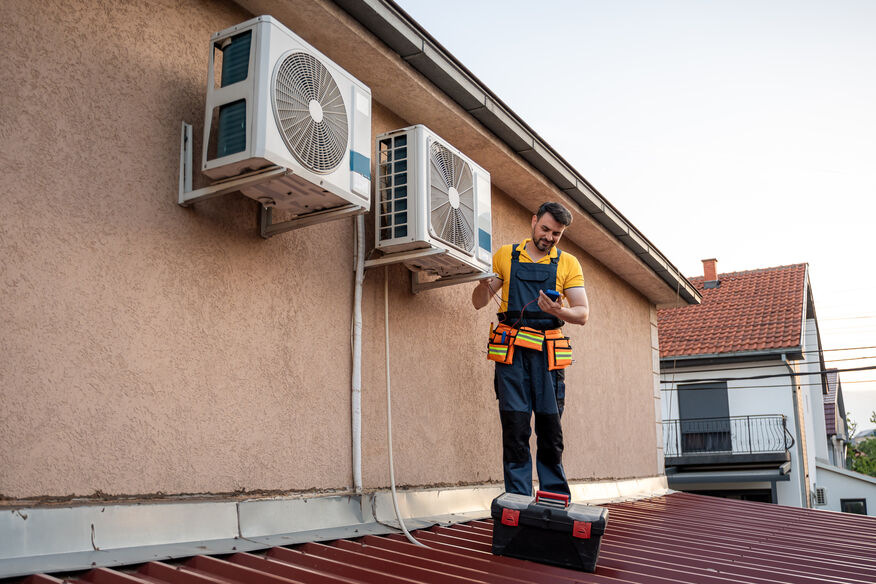What Makes HVAC Home Systems Essential for Comfort?
When it comes to maintaining a comfortable indoor environment, understanding your HVAC home system is crucial for homeowners across all climates. Whether you’re dealing with scorching summer heat or freezing winter temperatures, your HVAC system works tirelessly to regulate temperature, improve indoor air quality, and maintain optimal humidity levels. Modern HVAC home solutions incorporate advanced technology that enhances energy efficiency while reducing environmental impact by using sustainable products and innovative methods. This guide explores everything you need to know about HVAC home systems, from basic components to maintenance strategies that ensure year-round comfort.
Understanding Your HVAC Home System Components
An HVAC home setup consists of several interconnected components working together to create the perfect indoor climate. The primary elements include:
- Heating Equipment: Furnaces, boilers, or heat pumps that generate heat during cold months, often using hot water circulated by a circulator pump
- Cooling Equipment: Air conditioning units and central air conditioner systems for summer comfort
- Ventilation Systems: Fans, ducts, and vents ensure proper airflow throughout your house by ventilating the indoor air and maintaining oxygen levels
- Thermostat Controls: Smart or programmable devices regulating temperature automatically
- Air Filtration: Filters and purifiers removing contaminants from circulating air
- Ductwork Network: A distribution system carrying conditioned air to every room through the same ducts
The heart of most HVAC equipment includes the heat exchanger, which transfers thermal energy without mixing the heating medium with the surrounding air. For cooling equipment, the air conditioner removes heat from your indoor environment and releases it outside. Heat pumps offer dual functionality, providing both heating and cooling by reversing the refrigeration process depending on the season.
Air Conditioning Systems and Cooling Equipment Essentials
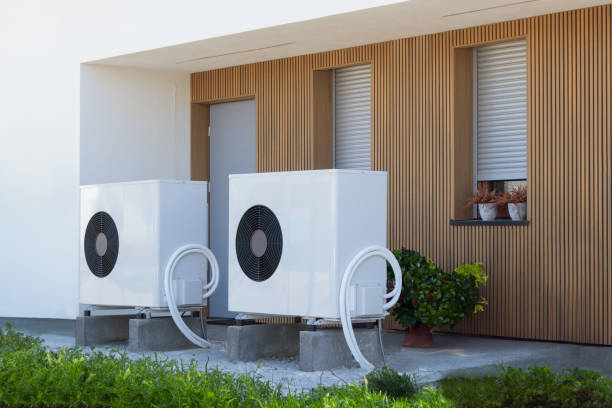
Air conditioning has become essential for maintaining comfort during hot months, serving as a critical component of your overall HVAC home setup. Modern cooling equipment ranges from traditional central air conditioner units to innovative ductless systems that offer targeted climate control.
Central air conditioning systems work by circulating refrigerant through a closed-loop system that absorbs heat from indoor air and releases it outdoors. As hot air rises within your home, the system continuously pulls it in, cools it, and redistributes it through vents typically located near the ceiling or floor.
Energy Efficient Cooling Solutions
Today’s cooling equipment focuses on energy efficiency to reduce environmental impact and operating costs. Key features include:
- Variable-Speed Compressors: Adjust output precisely to match cooling demands, reducing energy waste
- Smart Thermostats: Learn your schedule and optimize temperature settings automatically
- SEER Ratings: Modern units range from 13-25 SEER, with high-efficiency models achieving 16-25 SEER
- Energy Savings: Potential reduction of electricity consumption by 30-50%
- Eco-Friendly Refrigerants: New formulations with lower environmental impact
Ductless systems have gained popularity as an energy-efficient alternative, particularly in homes where installing ductwork proves challenging. These mini-split units eliminate energy losses associated with duct leakage while providing flexibility to control temperatures in individual rooms.
Indoor Air Quality and Your Health
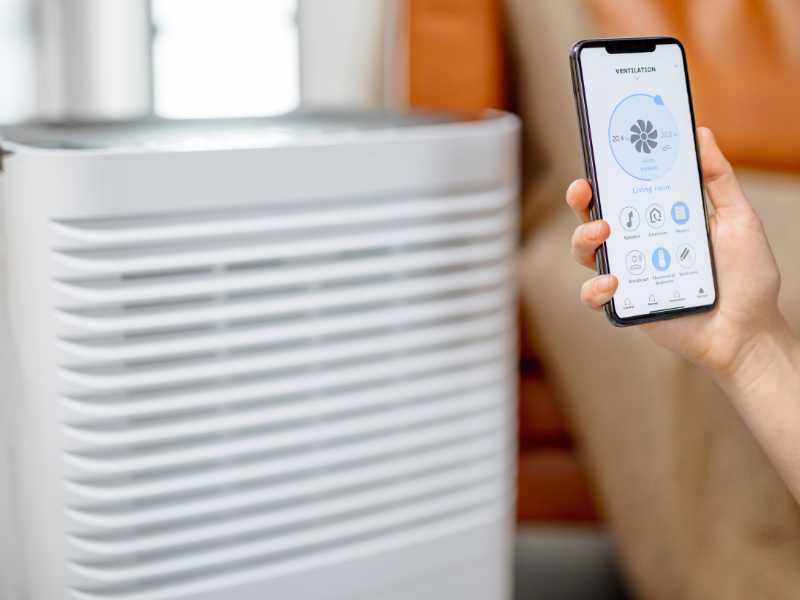
Indoor air quality represents a critical aspect of HVAC home systems. The air inside your home can contain various contaminants, including dust, airborne bacteria, dirt, and odors that affect both health and comfort. Your HVAC equipment plays a vital role in filtration and ventilation, ensuring you breathe clean air.
Improving Your Home’s Air Quality
Advanced air filters with higher MERV ratings capture smaller particles, including smoke and bacteria. Effective strategies include:
- High-Efficiency Filters: MERV 11-16 rated filters capturing microscopic particles
- Air Purifiers: Standalone or integrated units removing allergens and contaminants
- UV Light Systems: Germicidal lights kill airborne bacteria and mold spores
- Dehumidifiers: Dehumidifiers for cooler home environments, controlling moisture levels
- Air Quality Testing: Home air quality test identifying specific problems
Modern HVAC systems balance fresh air intake with energy efficiency, using heat recovery ventilators to precondition incoming air before it enters your living space. Proper ventilating methods protect your indoor environment and optimize system performance.
Heating Systems: Keeping Your Home Warm
When winter arrives, your heating system becomes the most important part of your HVAC home setup. Modern heating equipment comes in various forms:
Popular Heating Options:
- Gas Furnaces: Generate heat through natural gas combustion, offering powerful warmth and lower operating costs
- Electric Heaters: Convert electrical power directly to heat, ideal for mild climates
- Heat Pumps: Extract warmth from outdoor air even in freezing conditions, providing exceptional energy efficiency
- Boilers: Heat water and distribute it through radiators for consistent comfort
- Ductless Mini-Splits: Provide zone heating without requiring extensive ductwork
Heat Pumps and Alternative Solutions
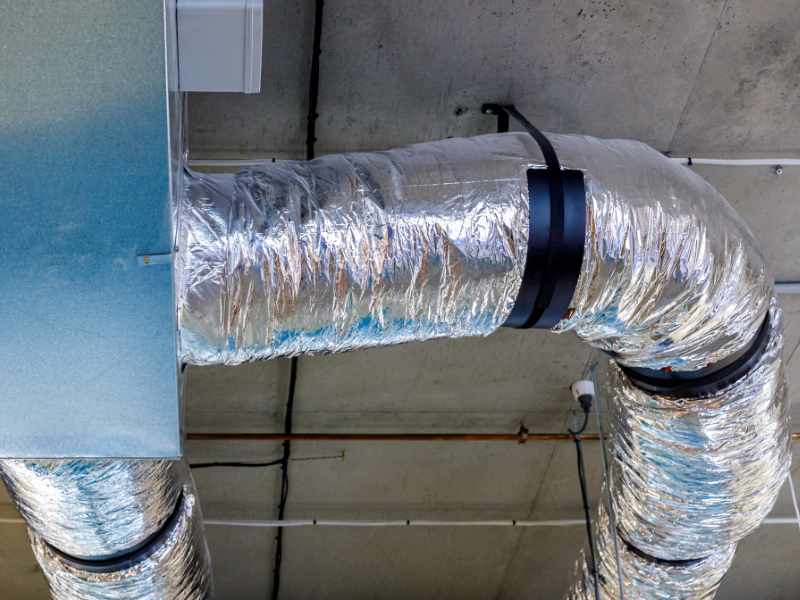
Heat pumps have revolutionized home comfort by providing both heating and cooling from a single unit. Key advantages include:
- Dual Functionality: One system handles both heating and cooling needs
- Energy Efficiency: Uses 50% less electricity than electric furnaces
- Environmental Benefits: Reduces carbon footprint with minimal fuel consumption
- Even Heating: Provides consistent temperatures without hot or cold spots
- Long-Term Savings: Lower operating costs offset higher initial investment
During winter, a heat pump extracts heat from outdoor air and transfers it inside, even when outside temperatures drop below freezing.
Maximizing Energy Efficiency and System Performance
Energy efficiency has become a primary concern for homeowners. Your HVAC home system typically accounts for nearly half of your total energy use. Critical factors affecting efficiency include:
- Equipment Age: Newer systems operate 20-40% more efficiently than 10+ year old units
- Maintenance History: Regular service maintains peak performance levels
- Insulation Quality: Proper insulation reduces heating and cooling demands
- Thermostat Settings: Programmable controls optimizing temperature schedules
- Ductwork Condition: Sealed ducts preventing 20-30% energy loss from leaks
Modern systems are rated using SEER (Seasonal Energy Efficiency Ratio) for cooling and AFUE (Annual Fuel Utilization Efficiency) for heating. Higher ratings indicate better performance and lower operating costs.
Smart Technology and Home Comfort Control
Smart thermostats provide unprecedented control over indoor climate while maximizing energy savings. Key features include:
- Learning Algorithms: Automatically adapt to your daily schedule
- Remote Access: Control temperature from anywhere using smartphone apps
- Energy Reports: Track usage patterns and identify savings opportunities
- Multi-Zone Control: Manage different areas independently
The best air filter for home HVAC systems plays a crucial role in maintaining both air quality and system efficiency. Filters typically need replacement every 1-3 months, with dirty filters causing reduced performance.
HVAC Equipment Types and Selection Guide
Choosing the right equipment for your home HVAC involves understanding available options. Here’s a comprehensive comparison:
| Equipment Type | Best For | Lifespan | Energy Efficiency | Key Benefits |
| Gas Furnace + Central AC | Cold climates with hot summers | 15-20 years | Moderate to High | Reliable, powerful heating |
| Heat Pump | Moderate climates | 10-15 years | Very High | Heating & cooling in one unit |
| Ductless Mini-Split | Room additions, no ductwork | 15-20 years | Very High | Zone control, energy efficient |
| Boiler + Radiators | Older homes, cold climates | 20-30 years | Moderate | Even, comfortable heat |
| Electric Furnace | Mild climates, no gas access | 15-20 years | Lower | Inexpensive to install |
| Geothermal Heat Pump | Long-term investment | 25+ years | Highest | Maximum efficiency, sustainability |
Understanding what FCU is in HVAC terminology helps when evaluating different system types. Fan Coil Units represent one option for climate control, particularly in commercial buildings.
Proper sizing represents one of the most critical decisions when installing new equipment. Professional HVAC industry experts use detailed calculations considering your home’s square footage, insulation, windows, and local climate. The best home HVAC system for your situation depends on factors including noise levels and warranty coverage.
Maintenance and Care for Long-Term Reliability
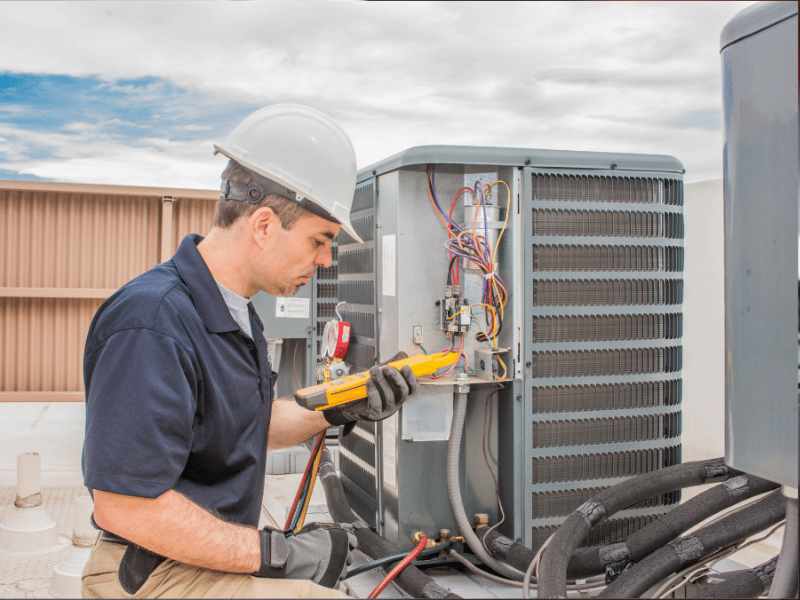
Regular maintenance ensures your HVAC home system delivers consistent performance and energy efficiency. Essential tasks include:
Homeowner Responsibilities:
- Replace air filters every 1-3 months, depending on usage
- Keep outdoor units clear of leaves, debris, and vegetation
- Ensure proper airflow around all vents and registers
- Monitor thermostat operation and battery levels
Professional Service Requirements:
- Refrigerant level checks and adjustments
- Electrical connection inspection and tightening of wires
- Coil cleaning for optimal heat transfer
- Condensate drain clearing and treatment
Seasonal Tune-Ups
Scheduling professional tune-ups twice yearly—before summer and winter—helps identify potential problems before they become emergencies. Technicians perform comprehensive inspections, including:
- Clean evaporator and condenser coils for maximum efficiency
- Check and adjust refrigerant levels to manufacturer specifications
- Test all electrical connections and tighten as needed
- Inspect ductwork for leaks, damage, or disconnections
- Calibrate the thermostat for accurate temperature control
This preventive approach typically costs far less than emergency repairs while extending your equipment’s lifespan.
Cost Considerations and Investment Value
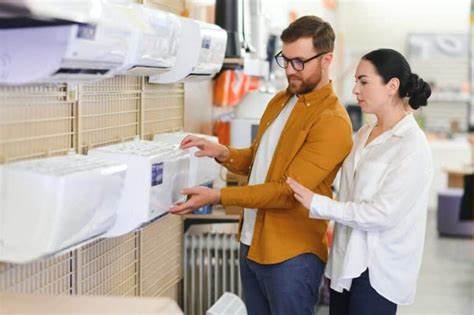
Installing or replacing HVAC home equipment represents a significant investment. Costs vary based on:
Upfront Factors:
- Equipment type and brand ($3,000 – $15,000+)
- System size and capacity requirements
- Energy efficiency ratings
- Installation complexity and labor costs
Ongoing Costs:
- Monthly energy bills for heating and cooling
- Regular filter replacements ($20-60 annually)
- Annual professional maintenance ($150-300)
High-efficiency equipment costs more upfront but delivers lower operating costs over the unit’s lifespan. Reduce HVAC energy bills through efficient equipment, proper maintenance, and smart usage habits.
Many utility companies offer rebates or tax credits for installing high-efficiency equipment, substantially reducing out-of-pocket costs. Some companies even provide equal payment options to help homeowners invest in sustainable HVAC solutions.
Working with HVAC Professionals
Selecting the right professional significantly impacts your experience. When choosing a contractor, consider:
Essential Qualifications:
- Proper state licensing and certifications
- Comprehensive liability and workers’ compensation insurance
- Positive customer reviews and high ratings
- Manufacturer training and certifications
Service Quality Indicators:
- Detailed written estimates before work begins
- Transparent pricing without hidden fees
- Warranty on both parts and labor
- Emergency service availability
Developing a relationship with a trusted provider means having someone to call when problems arise.
Conclusion
Understanding your HVAC home system empowers you to make informed decisions about maintenance, upgrades, and replacements that ensure year-round comfort while maximizing energy efficiency. Modern HVAC systems offer sophisticated solutions for every climate and budget. Regular maintenance, proper operation, and working with qualified professionals help you get the most from your investment while enjoying reliable, efficient performance for decades to come.
Ready to optimize your home comfort system or need expert guidance?
Contact Callidus Air today to discuss your HVAC needs and discover how professional service can enhance your indoor environment while reducing energy costs.
Frequently Asked Questions
What is the average lifespan of an HVAC home system?
Most HVAC systems last 15-20 years with proper maintenance, though individual components may need replacement sooner. Furnaces typically last 15-20 years, central air conditioners 12-15 years, and heat pumps 10-15 years. Regular professional service, timely filter changes, and addressing minor issues promptly can extend these lifespans significantly while maintaining efficiency.
How often should I change my air filters?
Air filter replacement frequency depends on filter type, household conditions, and system usage. Standard 1-inch filters typically need replacement every 30-90 days, while thicker pleated filters may last 6-12 months. Homes with pets, allergies, or high dust levels should change filters more frequently. Check filters monthly and replace them when they appear dirty or restrict airflow.
What temperature should I set my thermostat to save energy?
For optimal energy savings, set your thermostat to 78°F (26°C) during summer and 68°F (20°C) during winter when you’re home. Lower the temperature by 7-10 degrees when you’re away or sleeping to reduce energy consumption by up to 10% annually. Smart thermostats can automate these adjustments while maintaining comfort when you need it.
Are ductless mini-split systems worth the investment?
Ductless systems offer excellent value in specific situations, particularly for home additions, rooms without existing ductwork, or zones requiring independent temperature control. They provide superior energy efficiency compared to window units and avoid the 20-30% energy loss associated with leaky ducts. While installation costs run higher than window units, long-term energy savings and improved comfort often justify the investment.
How can I improve my home’s indoor air quality?
Improve indoor air quality by maintaining clean air filters, ensuring proper ventilation, controlling humidity levels between 30-50%, and eliminating pollution sources when possible. Consider upgrading to high-efficiency filters, installing air purifiers, or adding UV lights to your HVAC system. Schedule professional duct cleaning if you notice excessive dust or haven’t had service in several years, and test your air quality to identify specific issues requiring attention.

